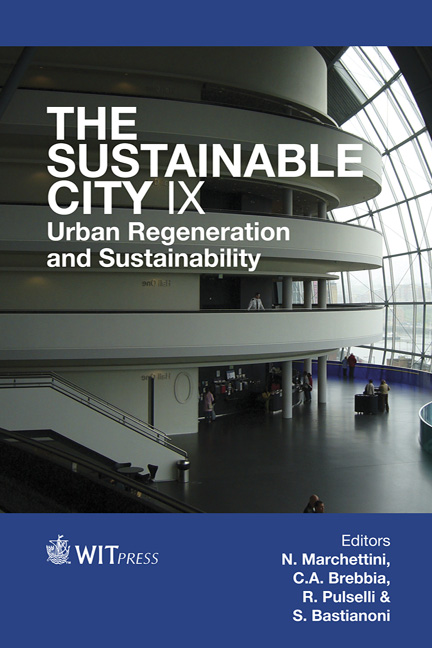Urban Energy Consumptions: Its Determinants And Future Research
Price
Free (open access)
Transaction
Volume
191
Pages
10
Page Range
561 - 570
Published
2014
Size
299 kb
Paper DOI
10.2495/SC140471
Copyright
WIT Press
Author(s)
R. Papa, C. Gargiulo, F. Zucaro, G. Angiello, G. Carpentieri
Abstract
The population growth of those living in urban areas reaches 50% of the total population, causing air pollution and energy consumption, which is also due to the high density of urban activities. This gradual process of urbanization, which covers an area equal to 2% of the world, is responsible for about 75% of the total consumption of resources. Although cities are the place where there is a wide concentration of energy demand and consumption, the attention given to the implications of this phenomenon is still inadequate. These considerations allow to perceive that such things require a broader strategy to solve the problem, based on the integration of urban, transport and environment policies for sustainable development. According to this awareness, the National Operative Programme (PON) funded “Smart Energy Master for the management of territory” has been developed; it is aimed at supporting local authorities in the development of strategies and tools for the reduction of energy consumption through actions designed to change behaviour (in terms of use and energy consumption). This paper describes some of the first results of the project, to develop a comprehensive/interpretive model at the urban scale. The paper is divided into three parts: the first part describes the current consumptions and future trends of building and transport sectors, focusing the attention on urban areas; the second part offers an overview of the main studies related to physical/functional characteristics of the city, buildings and transport; and the third part offers some causes for reflection on the need to change the range of interventions, to reduce urban energy consumption.
Keywords
energy consumption, urban form, energy parameters, energy building models





